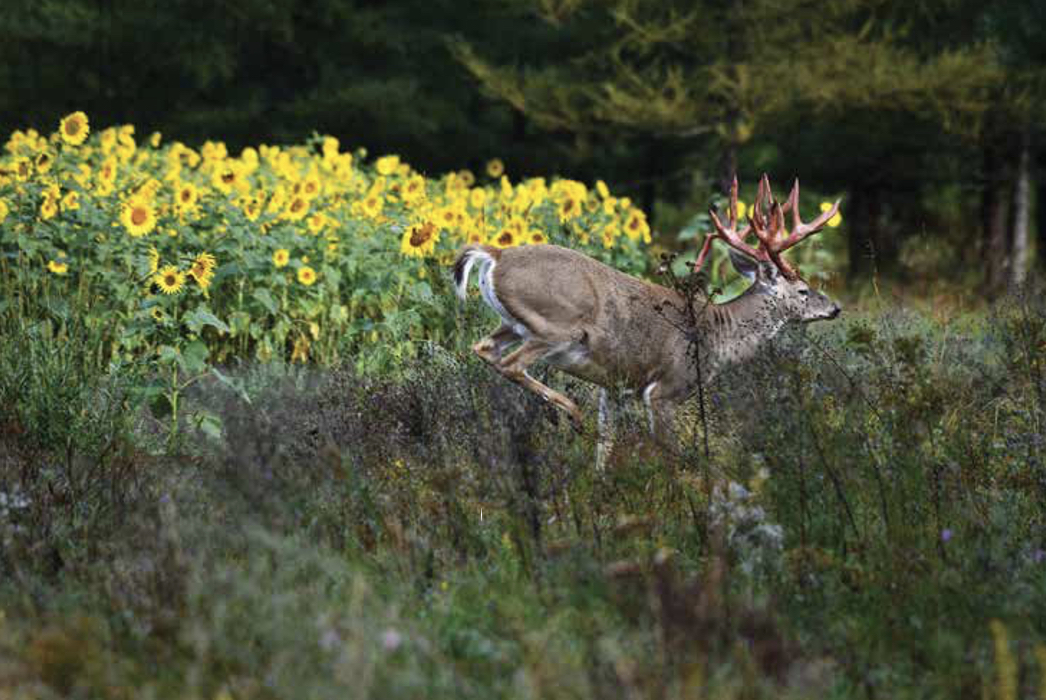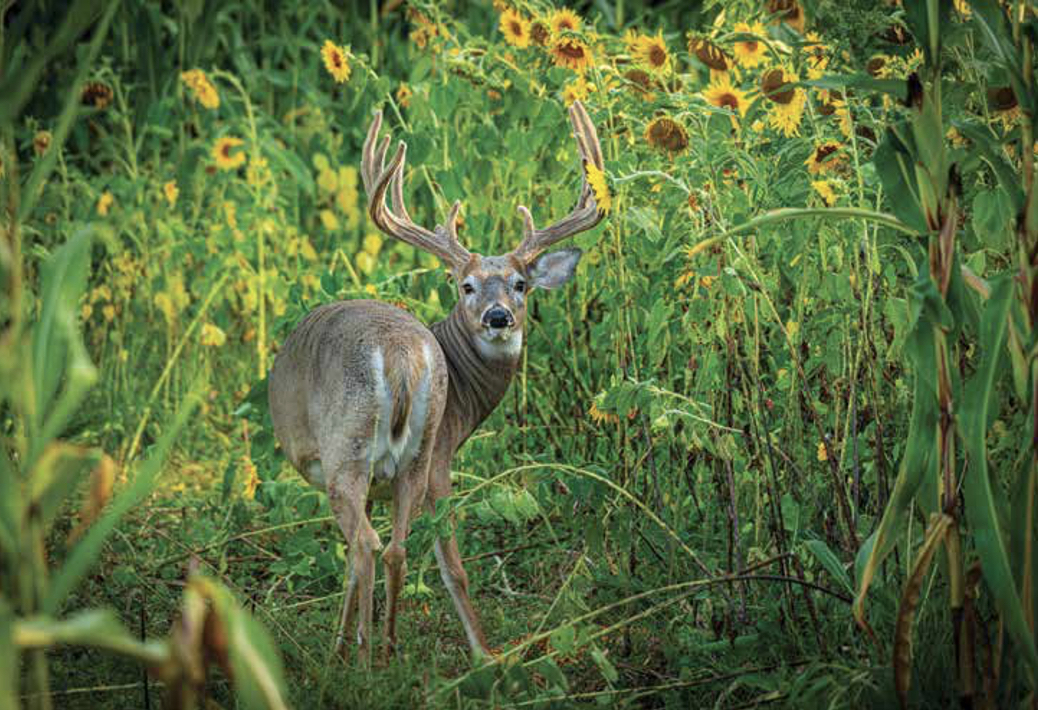Buying and Setting up a Smaller Hunting Property
By: Hank Tassitano
 With proper planning and management, relatively small parcels can provide better hunting than larger chunks.
With proper planning and management, relatively small parcels can provide better hunting than larger chunks.
Buying hunting land is exciting but can be daunting. Here are some basic tips.
First, find a realtor who is a hunter, as they’ll have a better idea about what you’re seeking. Also, the rule about buying a home also applies to purchasing hunting land: location, location, location.
The size of a property should not be the sole determining fac- tor. Some smaller properties can offer better hunting than larger parcels. When you identify a property you like, find out as much as possible about the adjoining parcels. That will help you understand the real potential of a property for hunting.
When you walk parcels, make notes to see if they contain thick cover, open fields, water sources and mast producing hardwoods. These are critical elements for a good hunting property. Also, pay close attention to rubs, deer trails and other signs of wildlife, such as turkey scratching in the leaves.
In addition, think about improvements you might need to make, such as clearing access roads, opening areas for food plots and potential stand locations. You can easily change the dynamics of a property with those improvements. Also, keep an open mind as you walk the property.
Case in Point
I recently sold a property where I had made those improvements. The work turned a not-so-good hunting property into outstanding hunting land. I owned the place nine years and was amazed how clearing a road system and clearing areas for food plots made such an amazing difference in the abundance of wildlife. My hunting success on mature bucks was high, and turkeys were abundant in spring.
Because this property was set up so well, it increased the selling value substantially. Any improvements you make to your land can bring a good return on investment. My realtor was surprised how much more the property sold for.
 I sold this property to downsize a bit, so it was more man- ageable as the years passed. Also, another area of my state has always interested me for its hunting potential, plus some great fishing. I worked with a local realtor who’s a serious deer hunter to find the right land. We walked a few places until we found what I believed had great potential. It had plenty of deer sign, two thick creek bottoms, a couple of big oak ridges and sever- al pine thickets. There was also a 1/2-acre meadow that would make a great food plot.
I sold this property to downsize a bit, so it was more man- ageable as the years passed. Also, another area of my state has always interested me for its hunting potential, plus some great fishing. I worked with a local realtor who’s a serious deer hunter to find the right land. We walked a few places until we found what I believed had great potential. It had plenty of deer sign, two thick creek bottoms, a couple of big oak ridges and sever- al pine thickets. There was also a 1/2-acre meadow that would make a great food plot.
I let the realtor know I was interested and got permission to walk the property again with a hunting buddy. Two sets of eyes are better than one for a second walk-through. We actually found a lot more buck sign by walking the creek bottoms and ridges. I was more impressed after the second walk, so I made an offer and closed on the 53-acre property.
Then the work began. The first task was to mark with flagging tape where the road system would go, as well as two additional food plots. I planned the locations of my plots so they were close to thick cover. That would let deer feel comfortable using the plots any time of day.
Next, I established a couple of mineral sites to help monitor the deer population and provide vitamins and minerals need- ed for spring and summer. One day after I set up the sites, deer found them. I had a cell cam at the sites and received pho- tos on my phone daily. At first, does hit them, but as time progressed into early summer, bucks started showing up. It was exciting to see the bucks, some of which had great promise for fall. Plus, because my food plots weren’t planted yet, it was a great way to see what deer were using the property.
The next step was to find the right per son with a mulcher/grinder to open up the road system and plots. A local man, Gene, had the necessary equipment and knowledge about building food plots. That was a plus, especially with having to open plots up in the woods.
The road system went quickly, and it took a couple of extra days to open the plots. Gene returned with bigger equipment to work up the ground for the plantings after summer was finished. That was good, because the soil was mostly clay and rocks. I would have had a tough time with my smaller equipment.

Setting the Table
When the ground was opened up, I took the most important step for planting food plots: soil tests on all the plots. This let me buy the correct amount of lime and spread it before discing the ground to plant.
Because of the rough soil, I reached out to Whitetail Institute for recommendations about what seed to plant at each plot. That was wise, because the plots were successful. Because the soil had a lower-than-desired pH, Whitetail’s representatives also recommended I use 1000lbs of lime per acre to boost my pH.
After planting the plots, the weather turned very dry for almost three weeks. I was worried that would hamper growth, but we finally started to get rain, and the plots grew. It took little time before deer were hitting the plots and eating the lush new growth. With a healthy deer population, though, I was concerned whether my plots were big enough to sustain the browsing. My largest plot is 1/2 acre, and my other plots are only 1/4 acre apiece. My fingers were crossed.
With the plot work finished, it was time to get stands and blinds set up. Because the property was new, and although I’d walked it several times, I relied on trail cameras to help decide where to set up stands and blinds. Having photos from early spring until the end of August gave me a good idea about the location of each stand. From experience, I knew I might need to adjust some of the stands or blinds after a full season, depending on what transpired.
With stands set up, food plots growing and deer using them on a regular basis, we had to wait for hunting season to open. My goal is to shoot bucks 3 years old or older, plus mature bucks with weaker antler growth and does to maintain a balanced herd. It’s wise to have a plan for your property and let anyone who hunts there know those plans.
Archery season was exciting, as I saw many deer during daylight. Lots of bucks hit my plots during daylight or moved past stands in wooded areas. I felt more confident about my stand locations for the season.
As acorns started falling in October, deer backed off the plots somewhat. Having stands set up for that scenario lets you stay in the game. That’s why having oaks on a property is important, as acorns become the main food source when they hit the ground — even if you have lush food plots.
As the rut heated up, my stands and blinds at critical locations — such as oak ridges, creek bottoms and food plots — revealed the activity I’d hoped for. Bucks and does visited those
locations during daylight. The trick was picking the right stand.
The first season was a success, as I took a couple of mature bucks and some does. Further, the work I’d put into the property was paying off. During the season, I made notes about additional work for the second year.
By late November and early December, deer had grazed my two smaller plots pretty hard, but they still had some daytime activity. I decided to see about expanding those smaller plots during winter. The Whitetail Institute Forage Oats in the 1/2-acre plot were doing a bit better, so that one was fine. Some in-season scouting and camera work showed another stand location was needed at a promising spot, and one of my ladder stands needed a slight adjustment.
You don’t have to accomplish every- thing the first year that you own a property. It can be done in stages to keep it manageable. It’s important to maintain food plots throughout the year with weed control, soil testing and rotating from perennial to annual plantings, especially when having smaller plots. Having a prime food source all year depending on where you live is critical to success.
Conclusion
Owning hunting property is a great investment and, if maintained properly, provides years of enjoyment. You will also find a deeper connection with the land when you have a habitat and wildlife management plan, and you see first-hand the improvements and benefits for all wildlife. Plus, working the land becomes an extension of the hunting experience.
